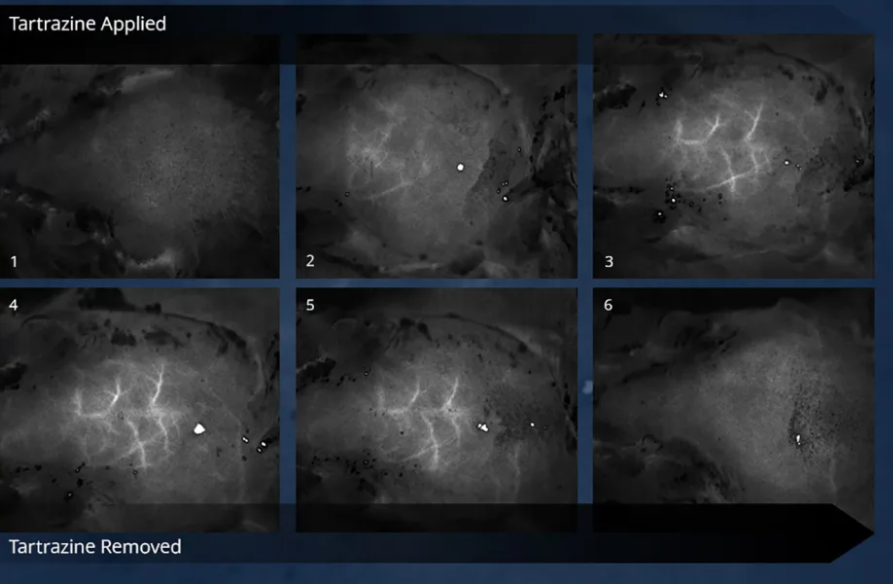A yellow food color that is frequently used in goods like chips and candy corn has been shown in recent studies to have an odd impact on mice, making their skin appear transparent. Because of its vivid yellow color, this artificial food coloring, also referred to as tartrazine or Yellow No. 5, is frequently used in processed foods.
In the experiment, mice exposed to high concentrations of the yellow dye experienced alterations in the structure of their skin, resulting in a certain degree of transparency. This was related to how the dye interacted with the skin’s tissues and cells, especially the proteins that keep the skin opaque. Although the transparency effect did not cause any harm to the mice, it does raise concerns about the long-term consequences of consuming huge amounts of artificial dyes and their possible impacts on human health in the future.

The study indicates that although the dye is widely regarded as safe for ingestion by humans in controlled levels, it may have unanticipated biological consequences in animals at high concentrations. The findings are noteworthy, but it’s crucial to remember that because different species have different metabolic processes, the benefits seen in mice might not apply to humans in the same way. Nonetheless, the study recommends further research should be done on the potential health effects of popular food additives like Yellow No. 5, especially when ingested in significant quantities over an extended period of time. Future developments resulting from this research may include stricter laws or substitutes for artificial food coloring.





